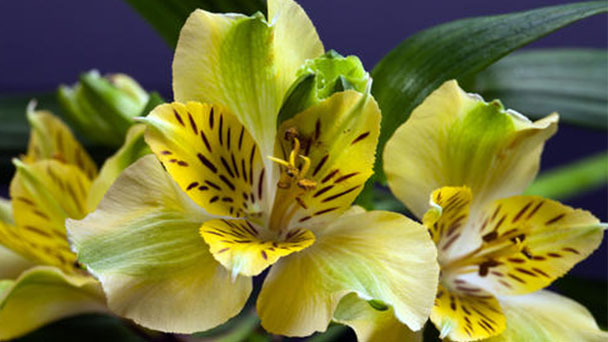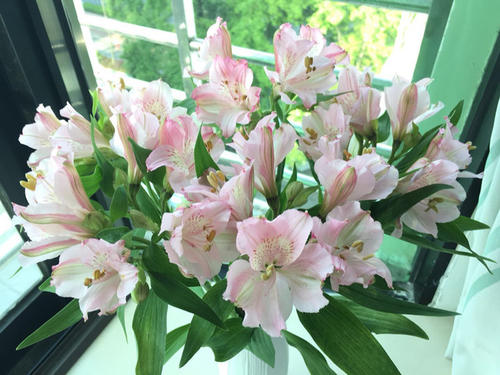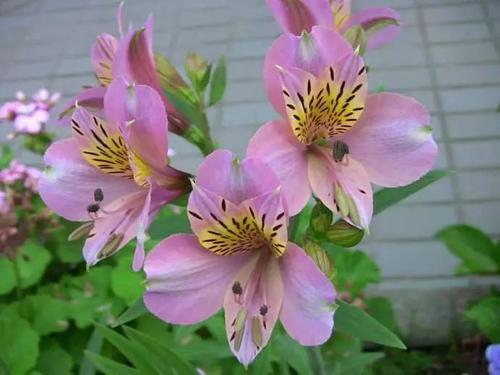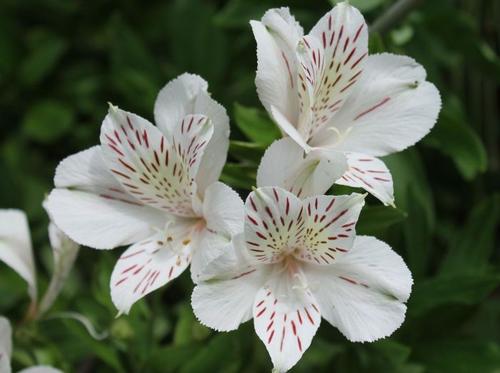How to grow and care for Peruvian Lily
Written by Maggie
Sep 11 2021

The Peruvian lily is a perennial herb. Because of the variety, a lot of colors, plant height from high to low. It is easy to grow outdoors because the flower is well suited to the domestic climate and is often used for gardening. Today we will bring you the growing method of Peruvian Lily and Peruvian lily care.

Growing Peruvian Lily
Peruvian Lily can be grown from seeds, seedlings, and bulbs. Since it is a bulb plant, we usually grow it with seedlings and bulbs, but you can also grow it from seeds.
Sowing time
Seeds of Peruvian Lily can be bought at the market or planted with seeds grown from Peruvian Lily. The best time to plant is from mid-September to early November when the germination temperature is 15 to 20 degrees.
Sowing method
Place rich growing soil into a cup of soil. Poke a hole in the cup and place the seeds. Cover it with about 5mm of soil and water. After that, put it in a cool place to keep the soil moist, and it will sprout in about a month. Germinated seedlings will be moved to the sun for management, and when the roots come out of the nutrient cup, we plant them in a pot. Peruvian Lily takes two to three years from planting to bloom.
When and how to grow Peruvian Lily bulbs
The bulbs of Peruvian Lily vary depending on the species but are suitable for planting in March or April or September to October. The bulb is shaped like a potato and has several storage roots at the bottom, called crowns, which turn into buds. Peruvian Lily is said to be susceptible to cold but will grow well outdoors if it is in an area where frost does not fall.
Growing Peruvian lily in pots
We need to prepare a big pot to plant it in advance. Because it prefers well-drained organic soil: peat moss or coal ash and aprotic soil mixed with the planting soil. It can also be mixed with some river sand and commercial culture soil.
When the soil is ready, place the soil about 10 centimeters from the edge of the pot and plant with the crown of the bulbs facing up, covering with 5 to 8 centimeters of soil. Storage roots tear easily, so treat them gently when planting.
Growing Peruvian Lily with seedlings
In the case of seedlings, the plants grow well and are therefore easiest to plant.
If you're a potted plant, you can grow five or six seedlings in a pot, or just one. If you let it flourish, but it will take a long time to grow the pot. Just as with bulbs, water them well after planting.
Replant Peruvian Lily
Peruvian Lily has been planted for a long time and its roots will grow a lot and it will grow a lot of bulbs. As the roots grow, the roots become crowded and cause blockages, so potted plants are transplanted every 2 to 3 years.
It is best to transplant during hibernation from September to October or March to May. Remove the plant to avoid root damage, then replace the soil and replant it. It's better if you break it up into smaller strands at this point.
Splitting the Peruvian lily
While replanting, we will split the plants. We first find the rhizomes with the bulbs and separate them. At this point, the bulb is easily broken, so be careful. In addition, since the bulbs of Peruvian Lily contain dermatitis ingredients, they should not be touched directly by hand and should be handled with gloves.

Peruvian lily care
Watering care
When the surface of the soil is dry but the stalks are still growing, pot plants need a lot of water. After that, when the flowers are fully open, they dry out, and when the stems die and slow down, stop watering, as it is a sign that they have entered the dormant phase. Note that root rot may occur if there is too much water at this time. In the case of flower beds, little watering is required.
Fertilizing care
Organic fertilizers can be embedded in the soil as soil. In the case of potted plants, add fertilizer once a month in the spring until the flowers bloom, or apply fertilizer once a week. Note that during the post-flowering dormancy period, growth becomes slow and therefore no fertilization is required.
Daily care of Peruvian Lily
Peruvian Lily prefers sunny temperate climates. It is a plant that cannot tolerate hot and humid climates. Root rot is likely to occur in high temperature and humidity conditions. We had better put the potted plant in a place where the sun is not strong or bright shade. In summer, we must move to a cool place to manage it.
In addition, it is relatively adapted to the cold, but if the frost is too long it will slowly wither, so please move to the balcony and indoor and take care of it in winter. In the case of flowerbed planting, a film will be covered to protect against frost.
Trimming care
Peruvian Lily grows seeds after the flower opens, and as the seeds grow, nutrients from the plant enter the seeds, so the bulbs weaken. So, we're going to take out the withered stems. Cut it off with scissors or gently pull it out with your hands. In addition, as the roots grow new bulbs, we also cut off the stems that have withered or aged from the base.
Diseases and pests prevention of Peruvian Lily
Growing Peruvian Lily in high temperatures and humidity may cause gray mold. Leaves and stems will melt and wither if infected, so let's manage in a well-ventilated area. In addition, we often cut off the flowers that are already open and prevent their flowers from becoming infected. If gray mold occurs, remove the diseased area and spray disinfectant.
Note that pests are aphids and spider mites, which weaken plants by taking nutrients from them. If you spot it, occasionally spray insecticide to kill it.
The Peruvian lily is one of the most common flowers in gardening because of its variety of colors. Many strong varieties have emerged in China in recent years and are easy to cultivate even for beginners. If you like Peruvian Lily, you may try to grow a pot of Peruvian Lily.

Latest Updated
- Benefits of Bugleweed - 7 Science-backed Health Benefits
- Bugleweed Dangers & Side Effects - Is It Poisonous?
- How to Plant Evergreen Trees - What You Should Know
- When to Plant Evergreens - Grow Guide for Evergreen Trees
- 12 Wonderful Evergreen Shrubs for Your Garden
- 12 Popular Evergreen Plants with Pictures for Beginners
- When And How To Prune A Lilac Bush Like a Pro
- How to Grow & Care for Lilac Vine (Hardenbergia Violacea)
- Japanese Lilac Tree (Syringa Reticulata) Care & Propagation Guide
- Shumard Oak Pros and Cons - What to Know
Popular Articles
- Winter maintenance of Antirrhinum Majus
- How to Grow Terminalia Mantaly Tree
- How to Grow and Care for Crossostephium Chinense
- How to grow Antirrhinum Majus in spring
- Peristeria Elata (Dove Orchid) Profile: Info & Care Guide
- Underwatered Snake Plant (Sansevieria Trifasciata) - Signs And How To Fix
- How to Care for Brazilian Jasmine Plant (Mandevilla Sanderi)
- How to Grow & Care for Graptopetalum Purple Delight in Summer
- Rosa Chinensis (China Rose): Plant Growing & Care Tips
- How to Care for Baby Sun Rose (Aptenia Cordifolia)